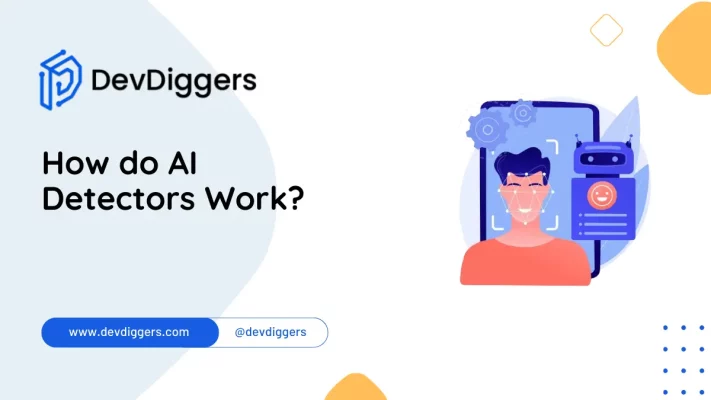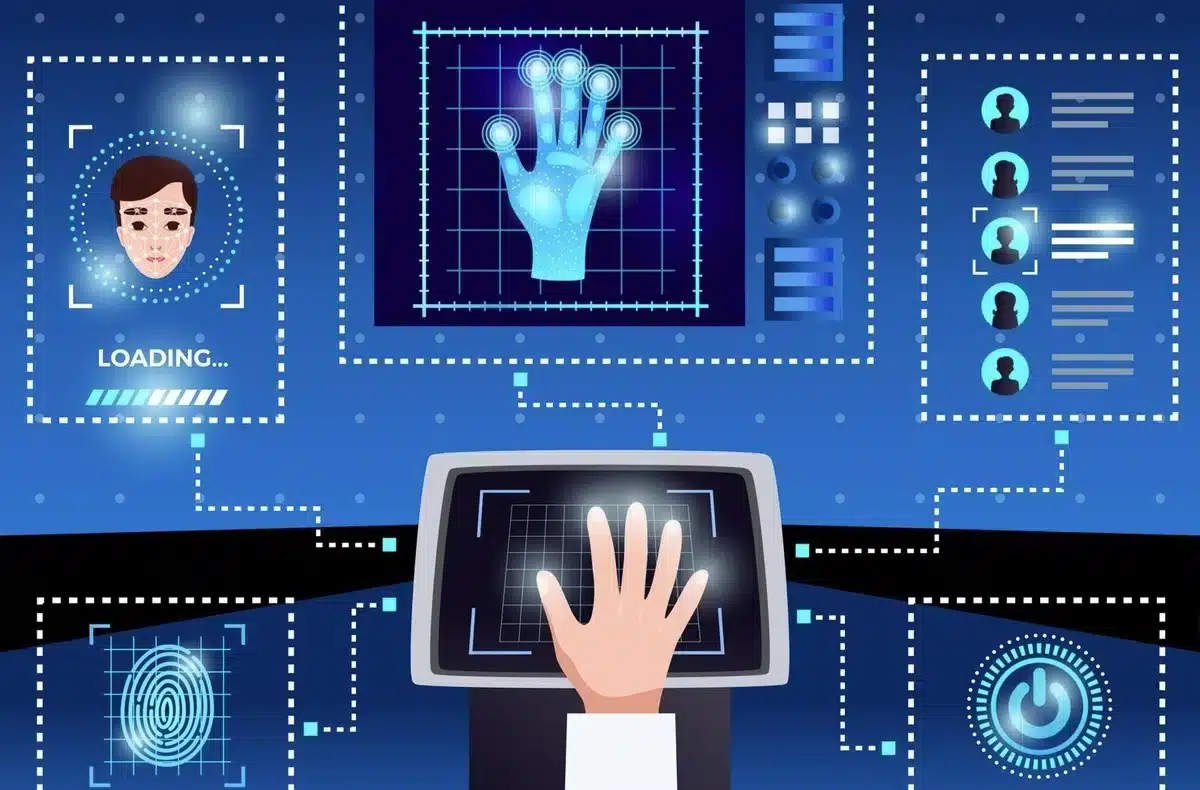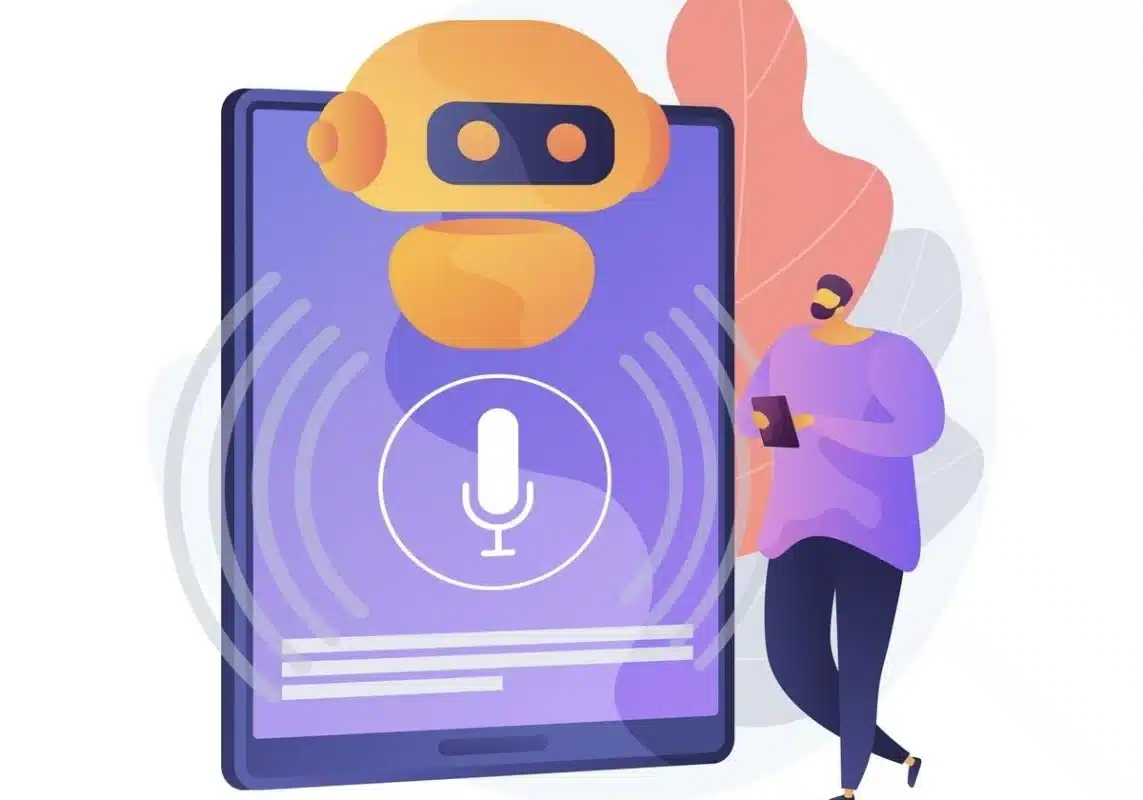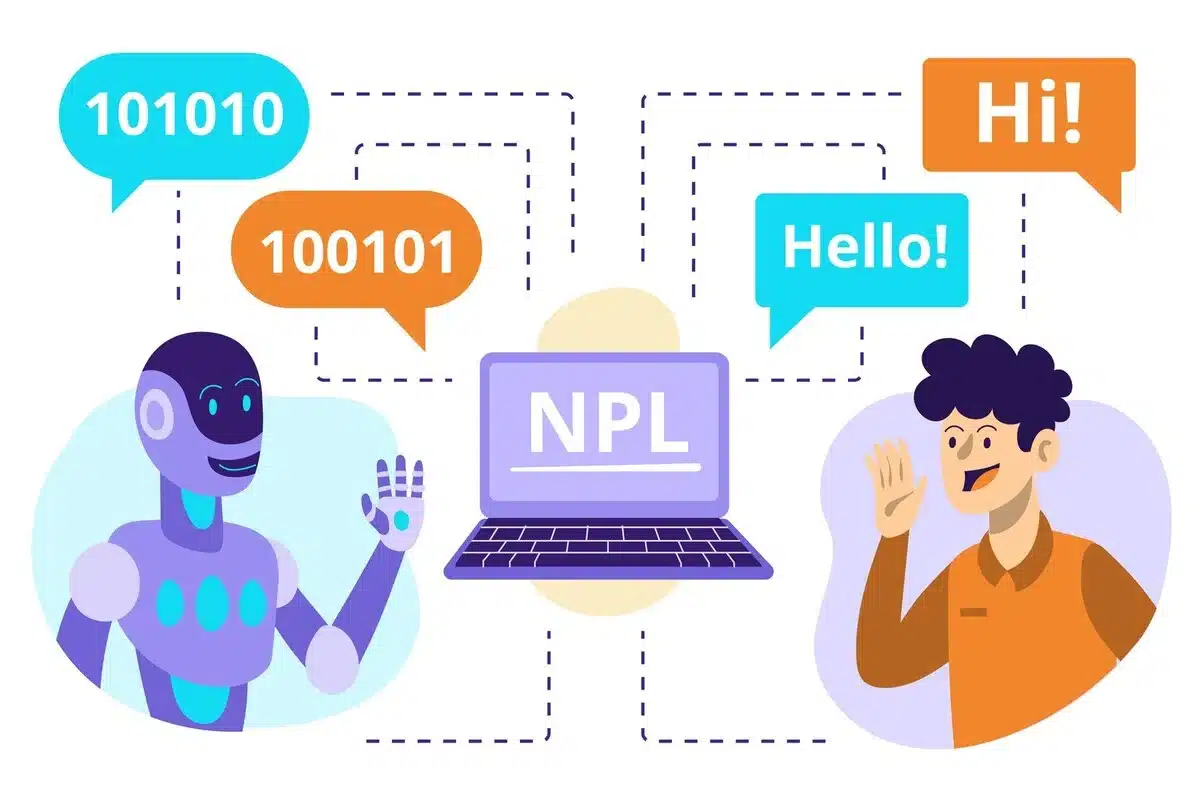How do AI Detectors Work?

Have you ever wondered “How do AI detectors work?”
Well, wonder no more! In this blog, we will summarize it in simple terms. We’ll explore how these nifty gadgets gather data, learn from it, and then use that knowledge to spot things.
From start to finish, we’ll show you the step-by-step process behind their magic.
Whether you’re a tech whiz or just curious, we’ve got you covered. So, let’s dive in and uncover the secrets of AI detectors together!
Table of Contents
What are AI detectors?

To understand how do AI detectors work? You need to understand what AI detectors are first.
AI detectors, shortened as artificial intelligence detectors, are advanced systems that use artificial intelligence (AI) algorithms to analyze data and identify specific patterns, items, behaviours, or defects.
These detectors can be used in various areas, including security, healthcare, manufacturing, and finance.
They process input data, take photos, videos, text, sensor readings, or other information, and produce predictions or classifications based on learned patterns.
AI detectors play an important part in various tasks, including object identification, facial recognition, anomaly detection, fraud detection, and environmental monitoring.
Their ability to automatically analyze vast datasets and find complicated patterns makes them important tools for boosting efficiency, accuracy, and decision-making in various domains.
Benefits of Using AI Detectors
With the question of “How do AI detectors work?” there are several benefits to using AI detectors. Let’s understand these benefits so you can utilize them whenever necessary:
- Accuracy: AI detectors can often achieve higher accuracy levels than traditional methods. They can accurately analyze vast amounts of data, lowering the chances of false positives or negatives.
- Efficiency: AI detectors can quickly process large volumes of data, allowing for rapid detection of anomalies or patterns. This efficiency can save time and resources compared to manual inspection or traditional detection methods.
- Scalability: AI detectors can scale effectively to handle varying data volume levels. Whether it’s a small dataset or streaming data in real time, AI detectors can adapt to the workload without sacrificing performance.
- Adaptability: AI detectors can learn and improve over time as they encounter new data. They can adapt to changing environments or emerging threats through machine learning algorithms, continuously enhancing their detection capabilities.
- Automation: AI detectors can automate the detection process, reducing the need for manual intervention. This automation allows human resources to focus on more complex tasks or decision-making processes.
- Consistency: AI detectors provide consistent results based on predefined criteria, reducing variability that may occur with human judgment or subjective interpretation.
- Cost-effectiveness: While there may be initial investment costs in developing or implementing AI detectors, they can eventually lead to cost savings by improving efficiency, reducing errors, and mitigating risks associated with undetected issues.
- Enhanced Security: In security applications, AI detectors can bolster defence mechanisms by continuously monitoring potential threats or suspicious activity, which may help avoid dangers or unauthorized access.
Using AI detectors offers numerous advantages across domains, from enhancing security measures to optimizing operational processes.
How do AI detectors work?

AI detectors use Generative AI and various algorithms and techniques to analyze data and make decisions or predictions. Here’s a breakdown of how they function:
- Data Collection: AI detectors gather data from various sources, such as text, images, or sensor readings.
- Feature Extraction: They identify important features or characteristics in the data relevant to the task. For example, if detecting AI-generated text, they might look at word frequency or sentence structure.
- Model Training: AI detectors undergo training using labelled data, where examples are provided with known outcomes. During training, the detectors learn to recognize patterns in the data associated with the outcomes.
- Algorithm Selection: Different algorithms are utilized depending on the specific task and the analyzed data type. For example, machine learning algorithms like neural networks or decision trees are commonly used for classification tasks.
- Prediction or Classification: Once trained, the AI detectors utilize the learned patterns to predict or classify new, unseen data. For instance, they might predict whether AI or a human-generated a piece of text.
- Feedback Loop: AI detectors may continuously grow and advance by getting feedback on predictions and updating their models as needed.
In summary, the general idea of “how do AI detectors work” is using data and algorithms to analyze information and make informed decisions or identifications based on patterns in the data.
Types of AI detectors
Apart from how do AI detectors work? There are several types of AI detectors that you might focus on, and they are designed to address different tasks and challenges.
Here are some common types:
1. Object Detection

Object detection is an essential role where the aim is to locate and identify objects in images or video frames.
- Techniques: Deep learning methods like CNNs are commonly used.
- Workflow: Features extraction, bounding box prediction, and object classification.
- Applications: Autonomous vehicles, surveillance, retail, healthcare, augmented reality, and industrial automation.
- Challenges: Accuracy, speed, scalability, and robustness in various environments.
2. Facial Recognition

Facial recognition is an AI detector that recognizes and validates people based on facial features.
It utilizes sophisticated algorithms to analyze unique facial characteristics such as the distance between the eyes, nose shape, and face contours.
- Applications: Used in security, access control, and surveillance.
- Benefits: Streamlines authentication, helps law enforcement, and provides insights for retailers.
- Concerns: Privacy issues, accuracy challenges, and potential biases.
- Importance of ethical use: Requires careful consideration to address societal implications.
3. Anomaly Detection

Anomaly detection, also known as finding outliers, is a method for identifying patterns or instances that differ significantly from the usual pattern in a collection.
- Types of Anomalies: Point anomalies, contextual anomalies, and collective anomalies.
- Techniques: statistical methods, machine learning algorithms (like clustering, classification, and density estimation), time-series analysis, and deep learning approaches (such as autoencoders and recurrent neural networks).
- Challenges: Imbalanced data (where anomalies are rare), defining what constitutes normal behaviour, dealing with noisy or incomplete data, and adapting to evolving anomalies.
4. Speech Recognition

Speech recognition, also called automatic speech recognition (ASR), is an AI detector that transcribes spoken language into text.
It involves converting spoken words into a sequence of understandable and actionable commands or text.
This technology enables computers to understand and process human speech.
- Techniques: Signal Processing Feature Extraction, Acoustic Modeling, Language Modeling, Decoding
- Applications: Virtual Assistants, Dictation Software, Voice Search, Language Translation, Automotive Systems
- Challenges: Accuracy, Ambiguity, Adaptation, Privacy Concerns, Limited Vocabulary, Integration Complexity
5. Natural language processing (NLP)

Natural language processing (NLP) deals with how computers and humans communicate using natural language.
It helps computers understand, respond to, and generate human language in a meaningful and context-relevant manner.
- Techniques: Tokenization, Part-of-Speech Tagging, Named Entity Recognition (NER), Question Answering, Text Summarization.
- Applications: Virtual Assistants, Chatbots, Language Translation Services.
- Challenges: Ambiguity, Context Understanding, Data Quality and Quantity, Multilinguality, Privacy and Security.
6. Plagiarism Detector

A Plagiarism detector is an AI system that identifies instances of content plagiarism by comparing documents or text against a database of existing content.
- Techniques: Text Comparison, Document Similarity Measures, Machine Learning.
- Applications: Education, Publishing Industry, Content Creation, Copyright infringement, and Protecting intellectual property rights.
- Challenges: Paraphrasing, Cross-Language Plagiarism, False Positives, Spotting Detection.
7. Medical Image Analysis

Medical Image Analysis (MIA) involves the application of AI and computer vision techniques to understand and extract meaningful information from medical images.
These images include X-rays, MRIs, CT scans, ultrasounds, and more.
MIA aims to aid medical professionals in the diagnosis, treatment planning, and disease monitoring.
- Techniques: Image Segmentation, Classification and Detection, Registration, Deep Learning.
- Applications: Disease Diagnosis, Treatment Planning, Drug Development and Clinical Trials, Disease Progression Monitoring.
- Challenges: Data Quality and Annotation, Generalization, Regulatory Compliance, Integration with Clinical Workflow.
Real-world Applications of AI detectors
AI detectors are like smart tools that can spot things automatically. They’re used in many different areas:
- Security and Surveillance: They help security cameras notice if something unusual is happening, like a stranger entering a building.
- Medical Diagnosis: AI detectors can look at pictures of our insides, like X-rays, and help doctors find any problems, like broken bones or sickness.
- Fraud Detection: Banks use AI detectors to find out if someone is trying to cheat them by watching out for strange transactions.
- Natural Disaster Prediction: AI can look at lots of information, like weather patterns or movements on the ground, to tell us if a disaster, like a big storm or earthquake, might happen.
- Quality Control in Manufacturing: They can check if the products manufactured in factories are high quality, like making sure there are no mistakes in toys or gadgets.
- Traffic Management: They monitor traffic, detect congestion, and manage traffic signals efficiently. These systems can optimize traffic flow, reduce congestion, and improve road safety by analyzing real-time traffic data from cameras and sensors.
- Sentiment Analysis: In social media monitoring and marketing, AI detectors use sentiment analysis to evaluate public opinion and customer feedback.
- Environmental Monitoring: AI is also used to monitor environmental changes like air and water and ensure everything is healthy and safe for animals and people.
- Cybersecurity: AI helps computers find and stop viruses and other malware and phishing attacks that can hurt our computers or steal our information.
- Autonomous Vehicles: AI detectors are essential components for automotive vehicles, which are trending these days, allowing vehicles to understand their surroundings. It analyzes the data from cameras, lidar, radar, and other sensors.
These smart detectors are used in many ways to help make life easier, safer, and more efficient!
Challenges and Limitations
AI detectors analyze data using complex algorithms to identify patterns and anomalies. While they offer numerous benefits, they also face several challenges and limitations:
- Data Quality: The effectiveness of AI detectors depends on the quality and quantity of the data they receive. If the data is complete, accurate, or biased, it can lead to correct detections or overlook essential patterns.
- Bias and Fairness: AI detectors can inherit biases in the data used to train them, leading to unfair or discriminatory outcomes, especially in sensitive areas like criminal justice or healthcare. Addressing and mitigating these biases is a significant challenge.
- Interpretability: Many AI detection models operate as black boxes, meaning it’s challenging to understand how they arrive at their conclusions. Lack of interpretability can hinder trust and make it difficult to assess the reliability of detections.
- Adversarial Attacks: AI detectors are susceptible to adversarial attacks, where subtle changes to input data can cause them to make incorrect detections. These attacks can undermine the reliability and security of AI detection systems.
- Scalability and Resource Requirements: Building and training AI detectors require substantial computational resources and expertise. As the complexity of models increases, scalability becomes a challenge, particularly for resource-constrained environments.
- Privacy Concerns: AI detectors may need access to sensitive data for effective detection, raising concerns about privacy and data protection. Balancing the need for detection with individual privacy rights presents a significant challenge for developers and policymakers.
- Robustness to Environmental Variability: AI detectors may struggle to perform consistently in real-world environments with variations in lighting, weather, or other environmental factors. Ensuring robustness to such variability is crucial for reliable detection performance.
- Regulatory and Ethical Considerations: AI detectors operate in various domains with regulatory and ethical implications. Compliance with regulations, standards, and ethical guidelines while ensuring the responsible use of AI technology presents ongoing challenges for developers and organizations.
- Continuous Learning and Adaptation: AI detectors may encounter new patterns or threats not present in their training data. Ensuring that detectors can continuously learn and adapt to evolving conditions is essential for maintaining effectiveness over time.
- Resource Allocation and Prioritization: Deploying AI detectors effectively requires careful resource allocation and prioritization consideration. Determining where and how to deploy detectors to maximize impact while managing resource constraints is a complex optimization problem.
Addressing these challenges and limitations requires interdisciplinary efforts involving researchers, developers, policymakers, and stakeholders to ensure the responsible development and deployment of AI detection systems.
Conclusion: How Do AI Detectors Work
In conclusion, understanding “how do AI detectors work?” sheds light on the fascinating world of artificial intelligence and its applications in various domains.
AI detectors can analyze information, recognize patterns, and make informed decisions in real-time through sophisticated algorithms and extensive training with large datasets.
However, while these detectors offer tremendous potential for enhancing efficiency, safety, and decision-making across industries, it’s crucial to acknowledge their challenges and limitations.
By addressing these challenges and strengthening responsible innovation, we can harness the full capabilities of AI detectors while ensuring their reliability, fairness, and trustworthiness in shaping our future.
FAQs: How Do AI Detectors Work
What types of data can AI detectors analyze?
AI detectors are adaptable and can analyze a wide range of data, including text, photos, audio, video, sensor data, and more. Depending on the application, the detectors may be trained to identify specific objects, classify images, detect fraudulent behaviour, interpret speech, or analyze sensor readings, among other tasks.
Are AI detectors always accurate?
While AI detectors can achieve impressive levels of accuracy, their performance may vary depending on factors such as the training data quality, the task’s complexity, and the deployment environment. It’s essential to regularly evaluate and fine-tune the detectors to ensure reliable performance over time.
Can AI detectors adapt to new situations?
Yes, many AI detectors are designed to be adaptable and can learn from new data inputs to improve their performance over time. This process, known as online learning or continual learning, allows detectors to adapt to changes in the environment or data distribution without manual intervention.
How can I get started with AI detectors for my business?
To get started with AI detectors for your business, consider partnering with a reputable AI software provider or hiring data scientists with expertise in machine learning and AI. Begin by identifying your business needs and goals, collecting relevant data, and experimenting with different AI models and algorithms to find the best fit for your application.



